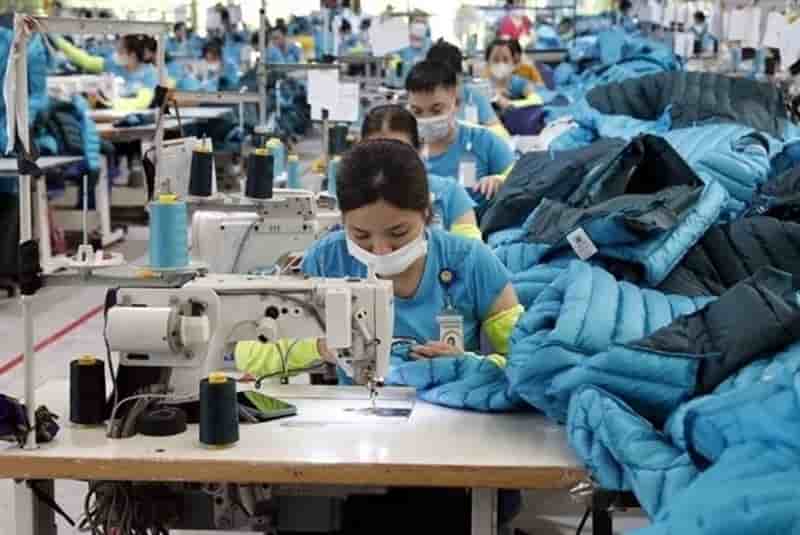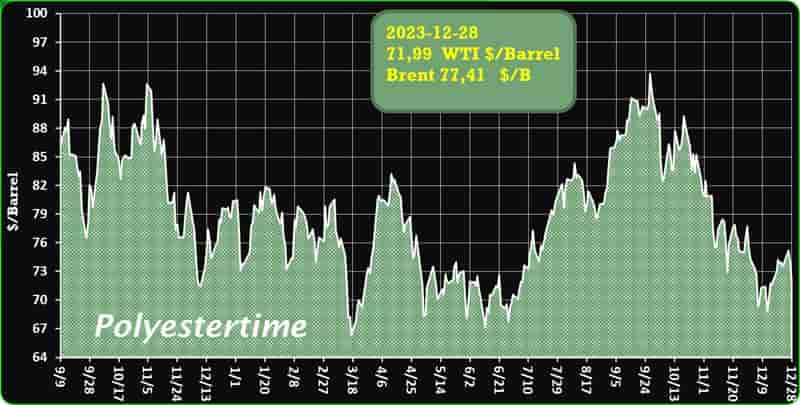Recently, we attended a webinar about how to keep your home free of toxins. In the conversation about which fabrics to choose for your furniture, one of the panelists suggested using a synthetic (polyester) fabric to avoid stains.
People often think synthetic fiber fabrics are naturally stain resistant. They are not. They are stain resistant because of the addition of chemicals which you do NOT want to bring into your home. Recycling Nylon
Now, the situation is a little more complicated than: They are NOT. Synthetic fibers are both hydrophobic, meaning that they resist absorbing liquids; and oilophilic, meaning that they more readily absorb oils and grease. There is a continuum of these states, hydrophilic – hydrophobic and oilophilic – oilophobic; but it is true that natural fiber fabrics are both hydrophilic and oilophobic. This means that natural fiber fabrics absorb water well, but oil poorly. Synthetic fiber fabrics are the opposite: They are hydrophobic and oilophilic, meaning that they resist absorbing water but more readily absorb oils and grease.
The fact that natural fibers are hydrophilic also means that they clean much better than hydrophilic synthetics. Washing machines (all washing action, with a machine, or by hand) depends on water absorption to clean. The more absorbent the fibers, the better they will clean. Recycling Nylon
So what do these hydro/oil phobic/philic characteristics mean for the staining and stain removal behavior of natural fibers versus synthetic fibers? It means that, lacking the addition of chemicals that we would all prefer to avoid, or that we should avoid AT ALL COSTS, a natural fiber fabric will absorb water-based stains more easily than a synthetic, but you will have an easier time removing that stain. Natural fibers will resist oil-based stains better than synthetics. And should you get an oil-based stain, you will have an easier time removing it than from a synthetic fabric. Synthetics will not clean in your washer nearly as well. Recycling Nylon

UBE now supplying nylon 6 resin for high-pressure hydrogen tanks in new crown FCEV
UBE Corporation has revealed its role as a supplier of polyamide (nylon) 6 resin, specifically UBE NYLON™ 1218IU, for Toyota Motor Corporation’s newly launched Crown FCEV (Fuel Cell Electric Vehicle). Developed collaboratively by Toyota Motor and UBE, this nylon 6 resin serves as a plastic liner material for high-pressure hydrogen tanks in fuel cell vehicles (FCVs). Notably, the Crown FCEV becomes the second Toyota Motor fuel cell passenger vehicle, following the MIRAI, to incorporate UBE’s nylon 6 resin.
The UBE NYLON™ 1218IU meets rigorous standards as an approved plastic liner material for the high-pressure hydrogen tank in the Crown FCEV. Recycling Nylon
Positioned as the innermost component of the tank, the plastic liner plays a crucial role in preventing hydrogen leakage. This nylon 6 resin exhibits exceptional performance in preventing hydrogen permeation, displaying robust mechanical characteristics for enduring rapid temperature changes during hydrogen filling and discharging, as well as providing impact resistance in low-temperature environments.
Since initiating the production and marketing of nylon 6 resin in 1959, UBE has evolved into a prominent global producer, boasting an annual manufacturing capacity of 198,000 tonnes. Recycling Nylon
The company has extended its influence as a composite materials manufacturer, emphasizing various engineering plastics to meet the increasingly sophisticated demands of the market. With a production capacity of 53,000 tonnes for engineering plastics composite materials, UBE maintains a global presence with operations in Japan, Asia, Europe, and North America. The company’s commitment to enhancing production capacity for engineering plastics composites aligns with its focus on developing products that cater to the diverse performance requirements of evolving automotive applications.
In related news, Manchester United plc has announced a significant agreement involving the acquisition of 25% of Class B shares and up to 25% of Class A shares by Sir Jim Ratcliffe, Chairman of INEOS.
Additionally, a substantial investment of $300 million is earmarked to facilitate future developments at Old Trafford. Recycling Nylon

EQUATE announces Jan MEG India Contract Price at USD520/tonne
EQUATE, the global monoethylene glycol (MEG) producer, has declared a Contract Price (ICP) of $520 per tonne CFR for its January 2024 MEG shipments to India, as stated by the company. This figure marks a $43 per tonne increase from the December pricing.
It’s worth noting that EQUATE’s India Contract Price (ICP) for Monoethylene Glycol (MEG) in December 2023 was set at $477 per metric ton CFR for arrivals at India Main Ports. This pricing strategy is influenced by the current regional supply and demand dynamics, offering a glimpse into short-term market conditions. Recycling Nylon
The specified Contract Price applies to the cost and freight (CFR) at India Main Ports, emphasizing the comprehensive financial aspects involved in the transaction. EQUATE’s regular updates on ICP play a crucial role in informing stakeholders about pricing fluctuations and market trends in the MEG sector. The January 2024 ICP of $520 per tonne reflects EQUATE’s response to evolving market conditions and its commitment to transparent communication in the industry.

Vietnam’s textiles and garments yet to fully unlock FTA’s advantages and potential
Vietnam textile and garment industry has not been able to fully capitalise on the advantages and potential of FTAs, according to the Ministry of Industry and Trade (MoIT).
To address this issue, the MoIT, as the leading agency for FTA negotiation and enforcement, has been enhancing connections with ministries, localities, associations, and stakeholders to establish a collaborative ecosystem to help the textile industry effectively leverage FTAs. Recycling Nylon
According to Ngo Chung Khanh, deputy head of the multilateral trade policy department under the MoIT, the Vietnamese government has signed various FTAs with many markets around the world, with a key focus on reducing tariffs to the lowest and quickest levels and simpler rules of origin for Vietnamese goods, especially in the textile and garment sector.
In a recent survey by the Vietnam Chamber of Commerce and Industry (VCCI), while most enterprises had some understanding of the FTAs, only about 8 per cent possessed a clear understanding. Recycling Nylon
According to the ministry, Vietnam’s trade balance has been significantly in deficit in the East Asian markets, amounting to nearly US$129 billion in 2022, with $60.5 billion in trade with China, $37.9 billion with South Korea, and $13.42 billion with Asean.

AI shows how microplastics are harming global soil and agriculture
In recent years, the accumulation of plastic waste in the environment has emerged as a pressing concern.
While the pollution of oceans by plastics is widely recognized, the presence of microplastics in soils across the globe is equally alarming. Recycling Nylon
These plastics, breaking down into microplastics (MPs), significantly impact soil properties and, alarmingly, find their way into the human food chain, raising health concerns.
Microplastics, soil, and corporate sustainability
The effects of microplastics on soil are crucial in the realm of corporate sustainability, particularly under the ‘Environmental’ pillar of Environmental, Social, and Governance (ESG) goals.
Companies worldwide are increasingly expected to adopt eco-friendly approaches, with a strong focus on addressing plastic pollution. Recycling Nylon
However, the complex interaction between soil and microplastics, influenced by the diversity of both soil types and microplastics, complicates understanding and managing their environmental impact.
Innovative research using AI machine learning
To bridge the research gap in this area, a team led by Prof. Yong Sik Ok, a Korean University Professor and a prominent figure in environmental governance, applied AI machine learning (ML) techniques to study microplastics in soil. Recycling Nylon

Recycling Nylon



